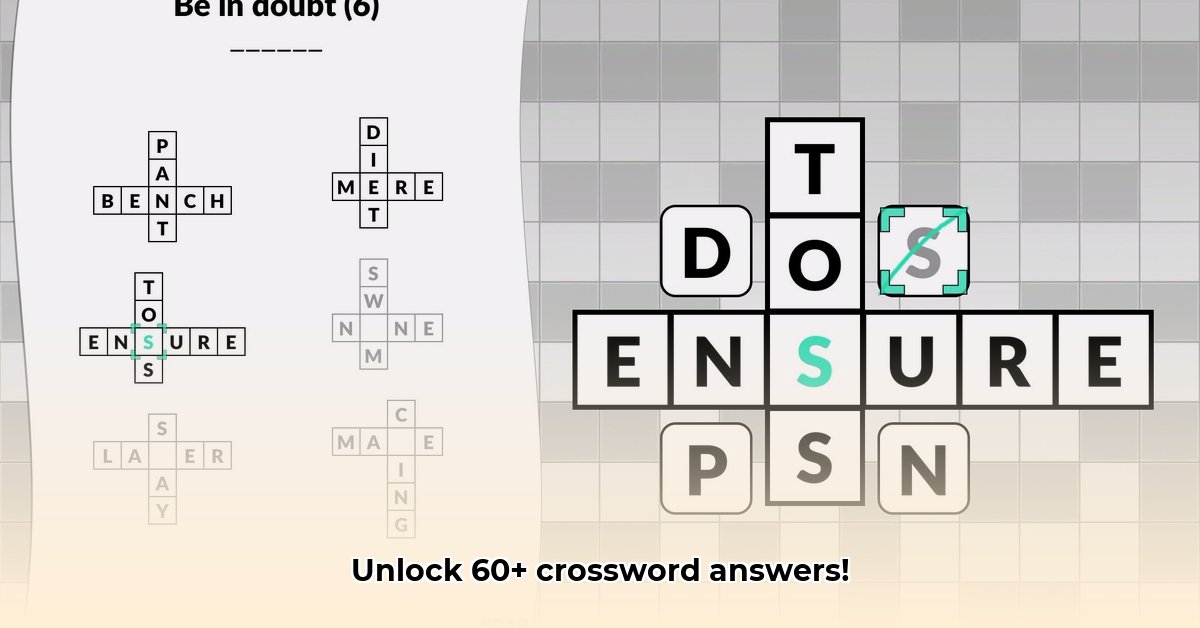
Difference Crossword Clue: Unraveling the Mystery of a Tricky Word
Ever stared blankly at a crossword clue simply stating "difference"? It seems straightforward, yet this seemingly simple word is a master of disguise, hiding dozens of possible answers depending on context. This article will explore why "difference" is such a crossword chameleon, guiding you towards deciphering its meaning and enhancing your crossword-solving skills.
The Many Faces of "Difference"
The challenge (and the appeal) of the "difference" clue lies in its adaptability. What does "difference" mean to you? Is it a disagreement, contrast, change, or perhaps a gap? The answer, surprisingly, is all of the above. This versatility makes the clue both challenging and popular among crossword constructors. It requires more than simply finding synonyms; solvers must determine which synonym fits the specific puzzle's context.
The Crossword Grid: Your Secret Weapon (and Nemesis)
The crossword grid itself plays a crucial role. The number of squares allocated significantly limits potential answers. Need a seven-letter word? Many possibilities are instantly eliminated. The puzzle's structure guides solvers towards the correct solution, organically nudging them toward one specific meaning of "difference." This dynamic interplay between clue and grid is carefully considered by puzzle constructors, essentially creating a puzzle within a puzzle. Are you ready to conquer this dual challenge?
A Look at Real-World Examples
Different crossword databases reveal wildly varying results for this single clue; some offer over 60 possibilities, while others present a far more limited selection. Why the discrepancy? Each database employs unique search parameters. This disparity highlights the subjective nature of "difference" interpretation, dependent on the overall puzzle context and individual clue phrasing.
Decoding the Answers: A Variety of Options
Let's explore potential answer categories:
- Nouns: Straightforward choices representing the core meaning: "contrast," "discrepancy," "variance," or "gap."
- Verbs: Representing action or change: "vary," "differ," or "deviate."
- Adjectives: Describing types of differences: "unlike," "separate," "distinct," or even "different" itself.
The clue can yield a noun, verb, or adjective—the possibilities are vast, completely dependent on the puzzle's logic and surrounding clues.
Mastering the "Difference" Clue: A Solver's Guide
How do you crack this word game? Here's a strategic approach:
Analyze Your Surroundings: Examine neighboring clues for contextual hints, often subtly revealing the correct interpretation of "difference." These surrounding clues are invaluable!
Think Beyond the Obvious: Don't limit yourself to simple definitions. Explore the word's nuances and consider less obvious interpretations.
Consider Grid Constraints: The number of letters required dictates potential answers. Pay close attention to the grid's dimensions.
Utilize Multiple Resources: If stuck, consult various crossword solvers. Observing the word's usage in different contexts might unlock the solution.
Beyond the Puzzle: The Power of Language
The "difference" clue perfectly illustrates how a single word can reveal communication's subtleties. Its multiple meanings highlight the power of context in shaping our understanding. It's a fascinating puzzle for crossword enthusiasts and a captivating linguistic lesson for everyone. This exploration of "difference" allows us to appreciate the complexity of human language and the creative artistry of puzzle design.
How to Create Challenging Crossword Clues with Ambiguous Words
Key Takeaways:
- Mastering challenging crossword clue creation involves exploiting the multiple meanings inherent in specific words.
- Careful consideration of grid constraints is crucial for effective clue construction.
- Thorough testing across various solver skill levels helps refine ambiguity and ensure a fair challenge.
- Understanding wordplay techniques—such as puns and double meanings—enhances both difficulty and intrigue.
- Exploring different databases and their varied word interpretations broadens understanding of potential ambiguity.
The essence of a truly challenging crossword clue lies in its ambiguity—crafting a question with multiple, plausible answers, yet only one perfectly fitting the grid. Let's delve into the techniques used to create such clues, focusing on using ambiguous words.
Understanding the Power of Ambiguity
Consider the word "bank." Is it a financial institution or a riverbank? This inherent ambiguity is a crossword constructor's goldmine. The challenge is to subtly guide the solver towards the correct interpretation without revealing the answer outright. Context is key; proximity to finance-related words makes "bank" less ambiguous, whereas placement near nature words elevates the challenge.
Crafting Ambiguous Clues: A Step-by-Step Guide
Word Selection: Choose words with multiple meanings. A thesaurus is an invaluable tool. Explore connotations, figurative language, and even slang or archaic meanings.
Contextual Cues: Subtly hint at the intended meaning through the surrounding words. Strategic word placement is crucial for subtle misdirection.
Wordplay: Leverage puns and double meanings to introduce surprising twists. A well-placed pun can alter the solver's perspective, creating a delightful, albeit temporary, roadblock.
Testing and Refinement: Test your clues on others. Their feedback is invaluable for refining ambiguity. Address any unintended answers or difficulties.
Grid Constraints: Utilize grid limitations. A short answer might necessitate a less common word meaning.
Examples of Ambiguous Clues
Clue: "Place for a deposit" (5 letters)
- Possible answers: BANK (financial), RIVERBANK (sediment deposit)
Clue: "What a player might do after scoring a goal" (4 letters).
- Possible answers: JUMP, DANCE, CELEBRATE, SHOUT.
These examples highlight the importance of word choice, contextual clues, and utilizing solvers' existing knowledge. Remember, the goal isn't to unfairly trick the solver, but to create a satisfying challenge.
Advanced Techniques for Ambiguous Clues
Cryptic Clues: Masterclasses in ambiguity, often involving puns, anagrams, and hidden words—layers of misdirection.
Figurative Language: Metaphors, similes, introduce unexpected interpretations, adding complexity.
The ultimate goal is to create a challenging, yet solvable, clue leading to a moment of satisfying triumph.